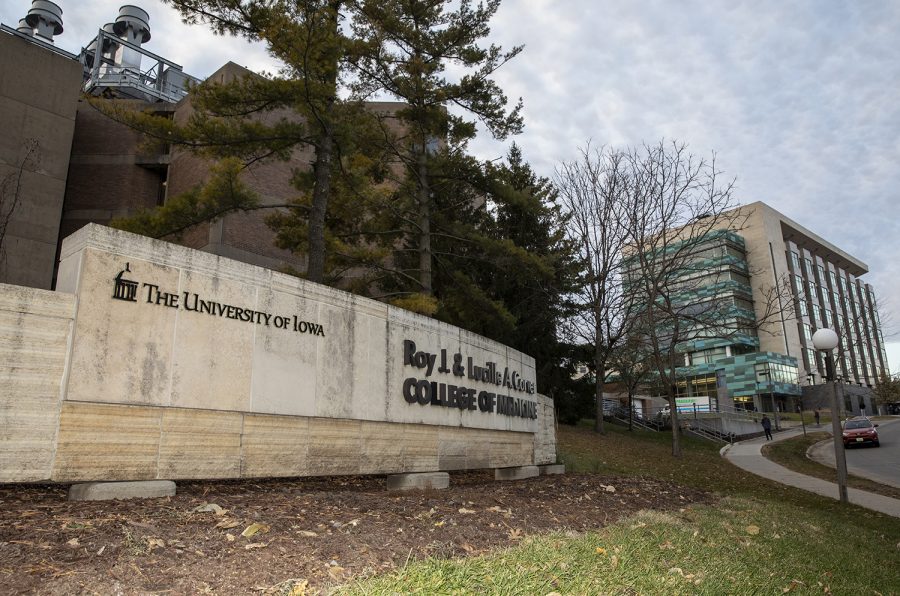Opinion: Deregulation will cure any pandemic
Letting medical students become doctors faster and ending the FDA’s roadblocks for new medicines would lead to a healthier America.
The Roy J. & Lucille A. Carver College of Medicine is seen on Monday, November 18, 2019. (Ryan Adams/The Daily Iowan)
April 30, 2020
One silver lining of our current societal setback is that even Democrats are beginning to acknowledge the futility of incessant government designs on American health care. Recently, President Trump and governors across the country from both parties have substantially rolled back burdensome medical regulations and arcane occupational licensing requirements. If these restrictions are unnecessary during a pandemic, they never should have been imposed to begin with.
For starters, the path to become a licensed physician in the U.S. is a cumbersome maze of educational hoops to jump through. Students at the University of Iowa Carver College of Medicine know this all too well.
The shortage of primary-care physicians is often a buzzing topic in the news, but the efficacy of upholding seemingly endless hurdles to become one are rarely discussed. First it takes four years to get an undergraduate degree, then another four years in medical school. This often entails hundreds of thousands of dollars in student-loan debt.
In most countries it doesn’t even take that long to become a doctor, but here, aspiring physicians are required to go through a minimum of three years for specialists in a residency program. Primary-care physician programs generally take longer. Some residencies last five, or even eight years. This system discourages talented young people passionate about saving lives from pursuing such a dream.
According to the Niskanen Center, “Establishing six-year, single-degree medical education programs for aspiring physicians is therefore about as close to a free lunch for the U.S. health-care system as you can get.” Physician programs in Sweden and Austria are even shorter than that.
So it should come as no surprise that among 23 developed countries, Sweden and Austria have the highest rates of physicians per 1,000 people at 5.4 and 5.14 respectively. The United States ranks 21st, with 2.59 physicians per 1,000 people. America should be emulating Sweden.
In early April New York Gov. Andrew Cuomo signed an executive order allowing medical students nearing graduation to skip residency and begin practicing right away. This is an excellent place to start.
Another major bureaucratic hurdle to killing coronavirus is the sometimes 10 year-long Food and Drug Administration testing process that pharmaceutical companies must go through to get a new drug to market. This also puts the U.S. at significant disadvantage to less burdened European competitors.
It’s difficult to imagine how many people would have died if the doctors who popularized penicillin in the 1940s had been required to suffer the same redundant process. Pharmaceutical companies have a natural incentive to make sure their products are safe before putting them to market. Creating a nongovernmental organization modeled on the International Organization for Standardization in Geneva would be a much more efficient way to approve new drugs than letting the FDA continue to kill off any semblance of entrepreneurial spirit in that industry.
Novel coronavirus testing in the U.S. was slowed by the government barring private testing, while insisting that the clumsy Centers for Disease Control and Prevention come up with a test. South Korea’s left-leaning government acted fast to let the private sector develop tests. By St. Patrick’s Day, South Korea had administered 40 times more coronavirus tests per capita than the U.S.
The tragedy of the coronavirus exposes the follies of centralized planning, and shines a light on brilliant ingenuity that is unleashed when individuals are afforded the freedom to pursue their ambitions. From the Wuhan, China bureaucrats who silenced doctors from warning the world about this virus to the CDC sticklers in Washington who hindered the testing process, it seems clear that government is the problem in health care, not the solution.





